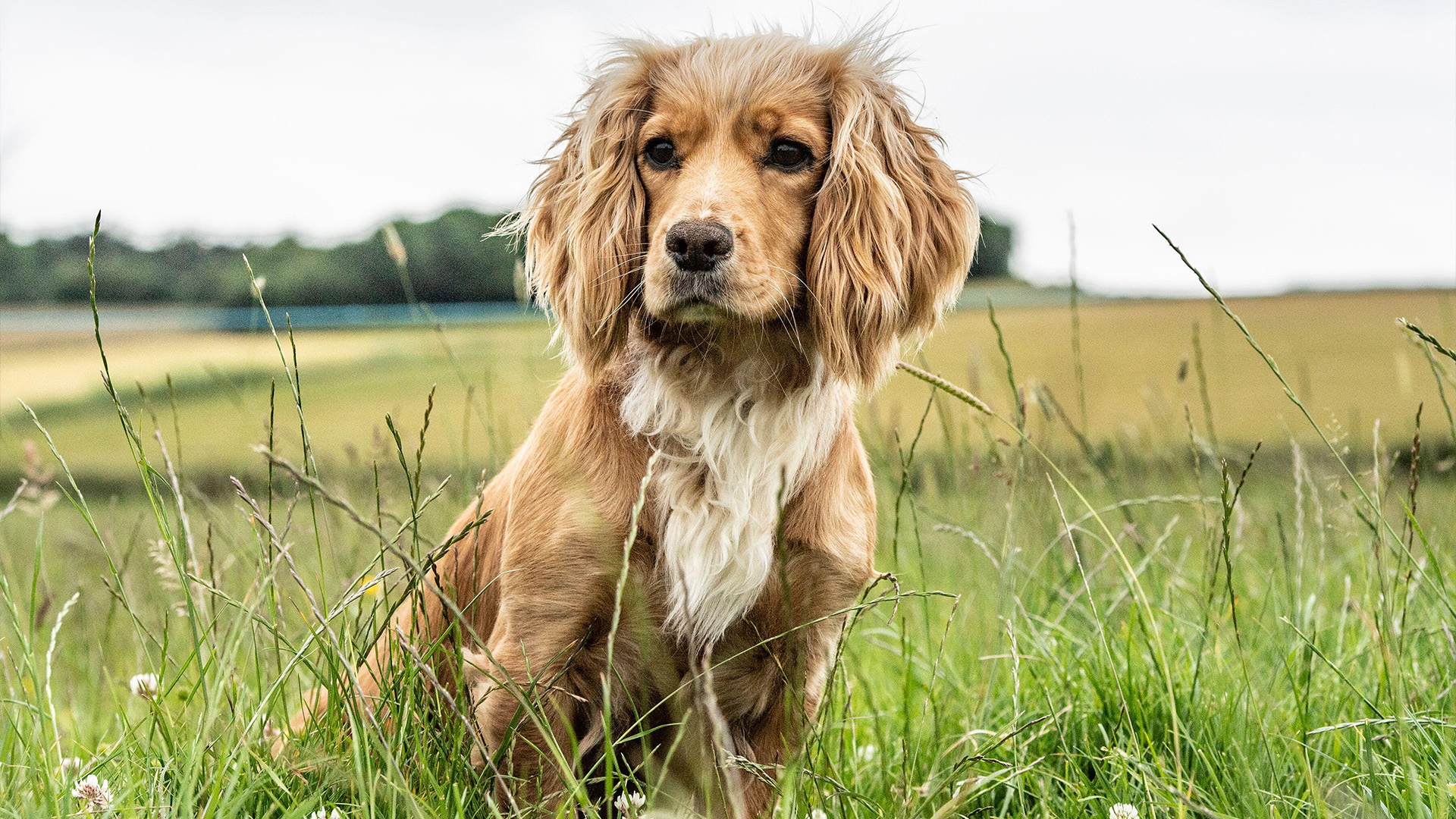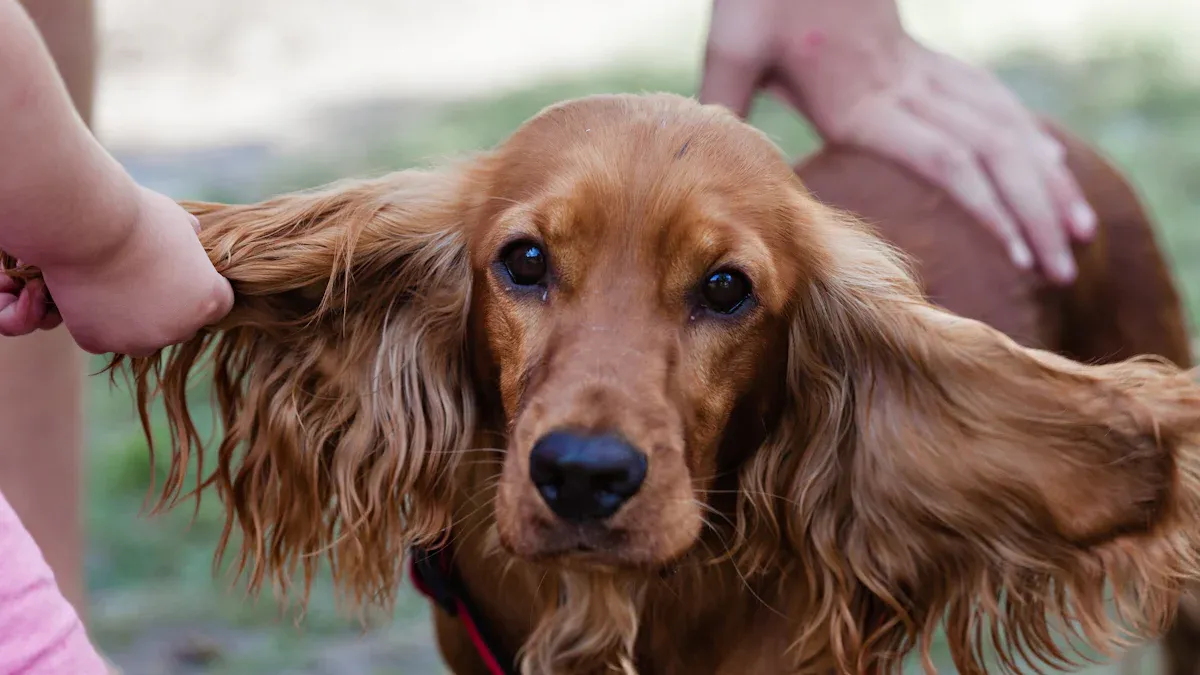With their floppy ears, warm, expressive eyes, and wagging tails that seem to have a mind of their own, Cocker Spaniels are some of the most beloved companion dogs. But beneath their sweet, affectionate exterior lies a breed with specific needs—needs that, when unmet, can lead to boredom, anxiety, or even destructive behaviors. The question many Cocker Spaniel owners ask is: How do I keep my Cocker Spaniel active and happy? The answer goes beyond “daily walks” or “occasional play”—it requires balancing their moderate physical energy with their intense need for social interaction, mental stimulation, and emotional security.
Cocker Spaniels were originally bred as hunting dogs, tasked with flushing out game in dense underbrush. This heritage gives them a natural curiosity, a love of movement, and a desire to “work” alongside their humans. But unlike high-energy breeds that thrive on nonstop activity or independent breeds that tolerate alone time, Cocker Spaniels need connected activity—movement that includes you, challenges their brains, and makes them feel like part of the family. This is where a slatmill for dogs comes in. Far from a “lazy alternative” to outdoor play, a slatmill is a tool that turns exercise into a bonding experience, addressing both their physical and emotional needs in a way traditional methods often miss. Let’s break down how to keep your Cocker Spaniel thriving, why traditional exercise falls short, and how a slatmill can be a game-changer for their happiness.

What Makes Cocker Spaniels Tick: Key Needs for Happiness & Activity
To keep a Cocker Spaniel active and happy, you first need to understand their unique traits—traits shaped by their hunting past and their role as companion dogs. Here are the three non-negotiable needs that define their well-being:
They Need “Moderate, Consistent” Physical Activity (Not Extreme)
Cocker Spaniels are medium-energy dogs, not hyperactive ones. Adult Cocker Spaniels typically require 45–60 minutes of daily physical activity, split into 2–3 sessions. This could be a brisk walk around the neighborhood, a game of fetch in the park, or a short hike with stops to sniff (their favorite pastime!). Puppies (6–12 months) need a bit more—60–75 minutes daily—but with frequent rest breaks to protect their growing joints. Seniors (8+ years) can scale back to 30–45 minutes of gentle movement, like slow walks or light play.
The key word here is “consistent.” Cocker Spaniels thrive on routine; skipping days of activity can leave them restless or anxious. They don’t need marathon runs or intense agility training (though some enjoy it!)—they just need regular, gentle movement that keeps their bodies healthy and their minds engaged.
They Need Mental Stimulation (More Than You Think)
Mental stimulation is just as important as exercise for your Cocker Spaniel. Teaching them to focus can be better than just letting them run. This helps them learn self-control and can tire out your energetic pup. Think of it like how students feel during tests—focusing can be tiring! Here are some good ways to give them mental challenges:
-
Puzzle toys that test their problem-solving skills.
-
Training sessions that teach new tricks or commands.
-
Interactive games that make them think and engage with you.
Cocker Spaniels do best in active homes where they get lots of attention. They are loving dogs and form strong bonds with their owners, so daily activities are important for their happiness.
They Need Emotional Connection (Above All Else)
Most importantly, Cocker Spaniels need a strong bond with their humans. These cheerful dogs are often called "velcro dogs" because they want to be near you. They are sensitive and react strongly to their surroundings, so a stable bond is very important. Here are some signs they need companionship:
-
They greet you happily when you come home.
-
They want physical affection, like cuddles and lap time.
-
They don’t do well when left alone for too long.
Cocker Spaniels connect closely with their owners and respond well to positive training. Unlike some breeds that are more independent, they need companionship and gentle guidance. This caring environment helps them feel safe and happy.
By knowing these key needs, you can help your Cocker Spaniel live a happy life full of activity, mental challenges, and emotional bonds.
Why Traditional Exercise Often Lets Cocker Spaniels Down

Many Cocker Spaniel owners try to keep their pups happy with common methods—daily walks, trips to the dog park, or backyard play—but these often miss the mark. Here’s why:
Walks Alone Lack Connection (and Fun)
A casual walk around the block is a good start, but it’s rarely enough for a Cocker Spaniel. If you’re not interacting with them—pointing out birds, talking to them, or stopping to let them sniff interesting things—they’ll quickly lose interest. They might lag behind, pull on the leash (trying to go where they want to explore), or seem distracted. By the end of the walk, their bodies might be tired, but their emotional and mental needs still aren’t met.
Dog Parks Are Stressful (Not Relaxing)
Dog parks can be overwhelming for Cocker Spaniels. They’re friendly, but they’re also sensitive—loud noises, large groups of unfamiliar dogs, or rough play can stress them out. Some Cocker Spaniels might hide behind you, while others might become overly excited (and a bit unruly) as a way to cope. Dog parks also lack the one-on-one connection Cocker Spaniels crave; they’d rather play with you than with a bunch of strangers.
Backyard Play Is Unstructured (and Lonely)
Playing in the backyard can be tricky. While it gives space to run, it often lacks structure. Cocker Spaniels need interaction and guidance. If they are left alone, they might get bored or anxious. To make backyard play more fun, set up obstacle courses or play interactive games. This keeps your pup active and mentally engaged, so they don’t feel lonely while playing.
Bad Weather Ruins Routine
Bad weather can mess up your exercise plans. Rain, snow, or heat can make daily walks hard. But skipping exercise isn’t an option for your Cocker Spaniel. Regular walks and fun play are key for their health. When the weather is bad, think of indoor activities. You can use a slatmill for dogs, which helps your pup exercise without worrying about the weather. This way, you keep their routine going, no matter what happens outside.
Cocker Spaniels do best with a mix of daily walks, playtime, and mental challenges. They are more active on days filled with different activities than on days with just walks. Doing things like scent work, agility, swimming, canicross, obedience training, and flyball can really improve their well-being.
By knowing these limits of traditional exercise, you can create a better routine for your Cocker Spaniel. They deserve a variety of activities that keep them happy, healthy, and close to you.
How a Slatmill for Dogs Keeps Cocker Spaniels Active & Happy

A slatmill for dogs (a non-electric, dog-powered exercise device) isn’t just a tool for burning calories—it’s a way to address all three of a Cocker Spaniel’s core needs: physical activity, mental stimulation, and emotional connection. Unlike electric treadmills or solo outdoor play, a slatmill turns exercise into a shared experience that feels like “fun” rather than a chore. Here’s how it works:
Provides Gentle, Consistent Movement (Perfect for Their Energy Level)
Cocker Spaniels do best with gentle, steady movement. A slatmill lets your dog run at their own speed, which is great for their energy. This safe space helps them exercise without getting too tired. Using it often can cut down on bad behaviors like digging and barking, making your home quieter.
Turns Exercise Into a Bonding Activity (They Get to Be With You)
The best part about a slatmill is that it’s a “together” activity. You stand right beside the slatmill while your Cocker Spaniel moves—you can talk to them, give them treats, or even sing to them (they won’t judge!). This one-on-one time is exactly what they crave. Unlike a walk where you might be distracted, a slatmill session lets you focus entirely on your pup. They’ll associate the slatmill with your attention and praise, making exercise something they look forward to.
Adds Mental Stimulation (It’s Not Just “Running”)
You can easily turn slatmill sessions into mental challenges for your Cocker Spaniel. Here are a few ideas:
-
Trick Training: Stop the slatmill and ask them to “sit,” “shake,” or “spin” before starting again. They’ll have to focus on your commands, which keeps their brain active.
-
Scent Games: Hold a treat under their nose before the session starts, then let them “track” the scent as they move (you can move the treat slowly in front of them). This taps into their natural hunting instinct.
-
Praise for Progress: Cheer them on when they keep a steady pace or follow a command. Positive reinforcement makes them feel clever and motivated.
These small mental challenges turn a simple workout into a “job” they love—something that makes them feel useful and engaged.
Weather-Proof (No More Ruined Routines)
Rain, snow, or extreme heat—none of it matters with a slatmill. You can set it up in your living room, garage, or basement, so your Cocker Spaniel never misses a day of activity. This consistency is key for their emotional well-being; they’ll feel secure knowing their routine won’t be disrupted by bad weather. A 20–30 minute slatmill session on a rainy day is enough to keep them calm and happy, without the stress of getting wet or cold.
Helps Anxious Cocker Spaniels Feel Calm
Cocker Spaniels are prone to anxiety, especially when they’re bored or lonely. The combination of gentle movement, your presence, and mental stimulation helps reduce their stress. Exercise releases endorphins (the “happy hormone”), and your attention makes them feel safe. Many Cocker Spaniel owners report that slatmill sessions help their anxious pups relax—they’re calmer, less destructive, and more content after a session.
Adding a slatmill to your Cocker Spaniel's routine can really boost their happiness and health.
How to Introduce Your Cocker Spaniel to a Slatmill
Introducing your Cocker Spaniel to a slatmill can be an exciting adventure! These dogs are known for their inquisitive and excitable nature. They love to explore and try new things. When you bring a slatmill into their routine, you’ll want to make it a positive experience.
Training and Challenges
Start by letting your Cocker Spaniel get familiar with the slatmill. Allow them to sniff it and explore at their own pace. This helps them feel comfortable. You can use treats to encourage them to step onto the mill. Remember, patience is key!
Cocker Spaniel personality plays a big role in how they adapt to new activities. Some may jump right in, while others might be a bit hesitant. If your pup seems unsure, don’t rush them. Instead, take small steps. Gradually increase their time on the slatmill as they become more confident.
Here are some helpful Cocker Spaniel training tips to keep in mind:
-
Use Positive Reinforcement: Reward your dog with treats or praise when they engage with the slatmill.
-
Keep Sessions Short: Start with just a few minutes and gradually extend the time as they get used to it.
-
Stay Engaged: Join them on this journey! Your presence will make them feel secure and excited.
By understanding your Cocker Spaniel's personality and using these training tips, you can make the introduction to the slatmill a fun and rewarding experience for both of you.

Keeping your Cocker Spaniel active and happy isn’t about doing big, elaborate things—it’s about meeting their unique needs: consistent movement, mental stimulation, and lots of your love. Traditional exercise often misses one or more of these, but a slatmill for dogs checks all the boxes. It’s a tool that turns exercise into a bonding experience, keeps their brains busy, and ensures their routine never gets disrupted—even on bad weather days.
A slatmill isn’t just about keeping your Cocker Spaniel physically healthy; it’s about keeping them emotionally healthy too. When they get to move their bodies, use their brains, and be with you—all at the same time—they’ll be the sweet, affectionate companion you fell in love with. Whether you’re dealing with a busy schedule, bad weather, or an anxious Cocker Spaniel, a slatmill can help you create a happy, balanced life for your pup.
At the end of the day, Cocker Spaniels just want to be with you, doing something fun. A slatmill lets you give them exactly that—every single day. And when your Cocker Spaniel is happy, you’ll be happy too—there’s nothing better than seeing that wagging tail and those bright eyes, knowing you’re giving them the best life possible. 🐾
FAQ
How much exercise does my Cocker Spaniel need daily?
Your Cocker Spaniel needs at least 70 minutes of exercise every day. This helps them stay healthy and happy.
Can I use a slatmill for my Cocker Spaniel?
Yes! A slatmill gives gentle, steady movement. It is a great choice for your Cocker Spaniel's exercise routine.
What are some fun activities for my Cocker Spaniel?
Try playing fetch, doing agility training, or using puzzle toys. These activities keep your pup active and mentally engaged! 🐾










0 Comments